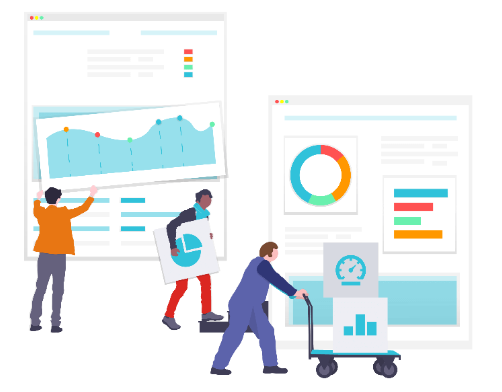Over the years, we’ve seen Click Through Rates (CTR) from organic searches steadily decrease.
Basically, even if your rankings stay the same and the number of people searching for you hasn’t changed — your Google traffic (and therefore conversions) just isn’t what it used to be.
With the rise of revolutionary tech like ChatGPT and BARD, we believe this trend is likely to not only continue but accelerate.
Let’s look at what the impact has been to date.

What is the CTR drop?
Indago’s dataset shows that there’s been an average drop in CTR of 26% across all ten positions on page one of Google Australia.
What this means for you: Despite your best SEO efforts — your site is driving less Google traffic and conversions compared to three years ago but it’s for reasons outside of your control.
These trends align with global reports within the SEO community like a recent study conducted by AWR, which also calculates a CTR drop year-over-year.

Is the drop device-specific?
Interestingly, the only winners where click-through rates have increased are the lower ranks (positions 6 to 10) on desktop devices.
However, the highest losses have been on desktop devices in the higher ranks (positions 1 to 5).
Most of our client’s traffic is on mobile and the drop in CTR has been seen across all positions, barring one.

Why is this drop happening?
There are a broad number of influences that need to be considered (particularly COVID), but here are the three main factors driving the drop.
1. Zero click searches
Google is frequently updating the way their search results work to deliver a more user-friendly experience.
The biggest example of this is increasingly popular search features that keep users on the results page and reduce their need to click.
Think about how many times you’ve ended your search after seeing the following:
- People Also Asked – Can provide immediate answers to multiple questions.
- Maps – Offers opening hours, location, reviews and phone numbers at a glance.
- Knowledge Graph – Often sits in the top right hand of the search results and delivers factual information on your search.
While these features make searching easier for users, it discourages them from visiting your site, leaving you with fewer CTRs (and therefore lower conversation rates).
2. Voice search and virtual assistants
Whether you’re using Alexa or Siri — Voicebot.ai’s report affirms virtual assistants are on the rise and reshaping the way we search.
Their ability to provide direct, auditory answers can decrease user interaction with traditional search results, and yep, reduce clicks.
3. Evolving user behaviour
Consumers today are undoubtedly more proficient at searching online.
A study from The Nielsen Norman Group found that users have become more skilled at scanning SERPs.
They want to click on results that quickly address their search, which would lead to decreased CTRs as they make better decisions and click through to fewer websites.
What can I do to counteract this?
Other than increasing the volume of keywords your site ranks for there’s little you can do to counteract this drop in traffic and conversions.
With the arrival of AI in search, we’re going to continue to see this drop in CTR and as an industry, we need to adapt by:
- Targeting Zero Click traffic
- Leveraging different SEO monitoring tools
1. Target zero click traffic
If you can’t beat em’, join em’.
Because of their popularity, it’s safe to assume these no-click features are only going to increase and so we need to produce content in formats that allow us to control these results.
Let’s be the brand people see straight away and deem the authority in our respective spaces.
2. Leverage different SEO monitoring tools
While we’re not at the point where we can’t measure SEO’s effectiveness by using traffic and conversions, we need to branch out by placing more value on impressions and the branding element SEO provides.
How often does a potential customer conduct a ‘brand’ search and simply scan Google to validate using us?
Think positive reviews, PR initiatives or a Wiki page. The value here is huge.
Is there a difference in answering a potential customer’s questions within Google or on your website?
When users visit your site, we have the ability to cookie them and capture their details if they decide to fill in a form so we’d lose that but the brand value is surely comparable. We need to both measure that result and assign a value to it.
Conclusion
At Indago, we’re big believers in the longstanding power of SEO and continuously update our suite of services to remain ahead of the pack.
Written by
Gary Nissim





